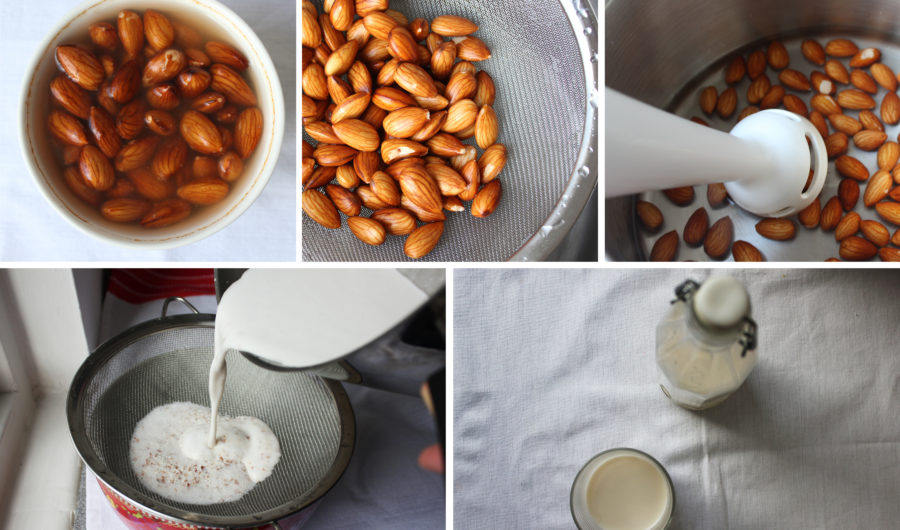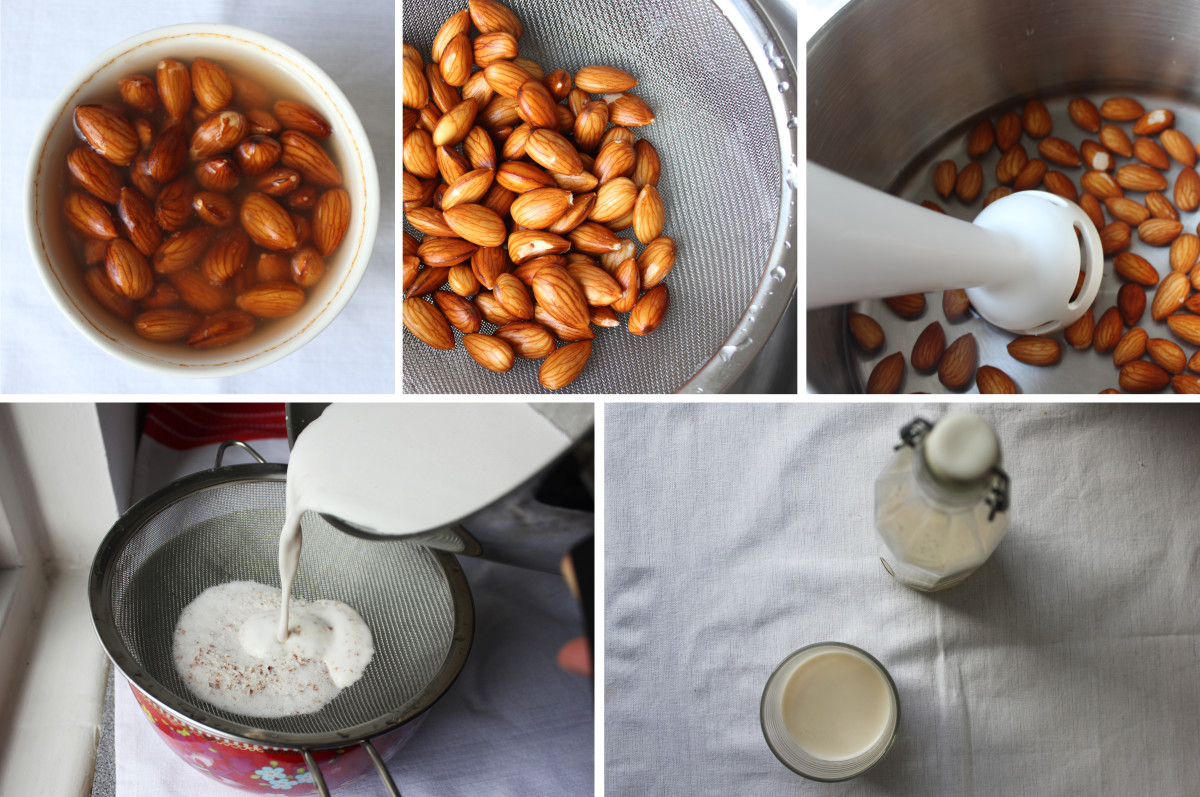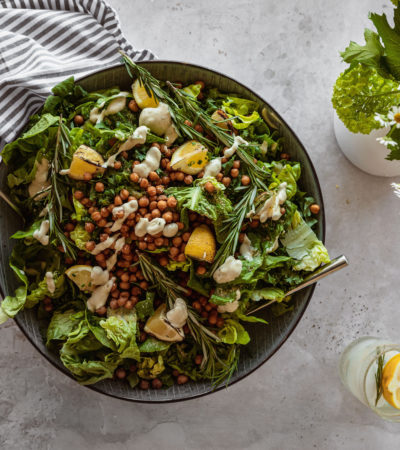Almond milk is low in carbohydrates, high in calcium and contains more healthy nutrients than other non-dairy alternatives. It’s no wonder that health food shops and most big-chain supermarkets now have almond milk brimming from their shelves. It’s great to see that you can pick up this healthy alternative just as easily as dairy milk but however great this convenience is; shelf products inevitably have stabilizers to increase their shelf life. Read the back of most almond milk cartons and you may find it filled with unwanted E-numbers. Making your own almond milk is quick, easy and reassuring to know exactly what has gone into your milk.
Here is a quick guide to making your own almond milk.
I used a 100g pack of almonds here, but you can make any quantity you like as the ratio is always 1 part almonds to 4 parts water.
Recipe:
1. Soak 100g almonds overnight in some cold water.
2. Once soaked, give the almonds a good wash under the tap and then add 400ml of fresh water.
3. Blend the almonds with the water for about 1 minute in a juice blender or hand blender.
4. Strain this through a nut milk bag, muslin cloth or fine-holed sieve.
And that’s it. Extremely healthy, pure almond milk in a few easy steps. This milk will last for 3-4 days in the fridge so it’s best to make a small amount at a time.
It seems like such a waste to throw away the leftover almond pulp so save it to make these healthy Almond Pulp crackers.
Recipe (makes around 80 small crackers):
Dry ingredients
150g almond pulp
150g plain flour
60 wholemeal flour
30g wheatgerm
1 teaspoon salt
1/2 teaspoon cayenne pepper
pinch chilli powder
1 teaspoon cumin seeds, crushed
Wet ingredients
3 tablespoons coconut oil, melted
Approx. 50ml water
1. Pre-heat your oven to 150C and add all the dry ingredients in a bowl and mix well. Pour the coconut oil into the bowl and stir with a fork. Once the mixture starts clumping together, use your hands to knead it and slowly add enough water to form a dough. If the dough seems a little sticky, add a little more flour.
2. Bake the crackers in batches so on a floured surface, roll a tennis ball sized dough out until wafer thin. Cut the dough into shapes and place on a lightly greased baking tray. Bake these for 20 minutes in total, checking and rotating the tray halfway through. Roll out another batch while one is cooking until they’re all baked. The crackers should be slightly brown on top and has a crisp snap.
These crackers are great with cheese, guacamole and salsa. I still had some almond pulp left over after making these crackers, so I added them to a Beetroot Dip.
Recipe:
3 cooked beetroots
1 tablespoon almond pulp
3 tablespoons olive oil
1 tablespoon pomegranate vinegar (or red wine vinegar)
salt and pepper
Blend or mash the beetroot until they’re a chunky pulp. Drain a little bit of the excess liquid out and add the almond pulp, oil, vinegar and seasoning well and mix well.
Enjoy with almond pulp crackers.
These are just 2 examples of what you can do with leftover almond pulp but the possibilities are endless – you can use it for cookies, brownies or even dehydrate it and use it as a substitute for breadcrumbs. With all these uses, why would you need to buy Almond milk again?
Recipe by Hannah Chung at www.cookeatdream.com

















